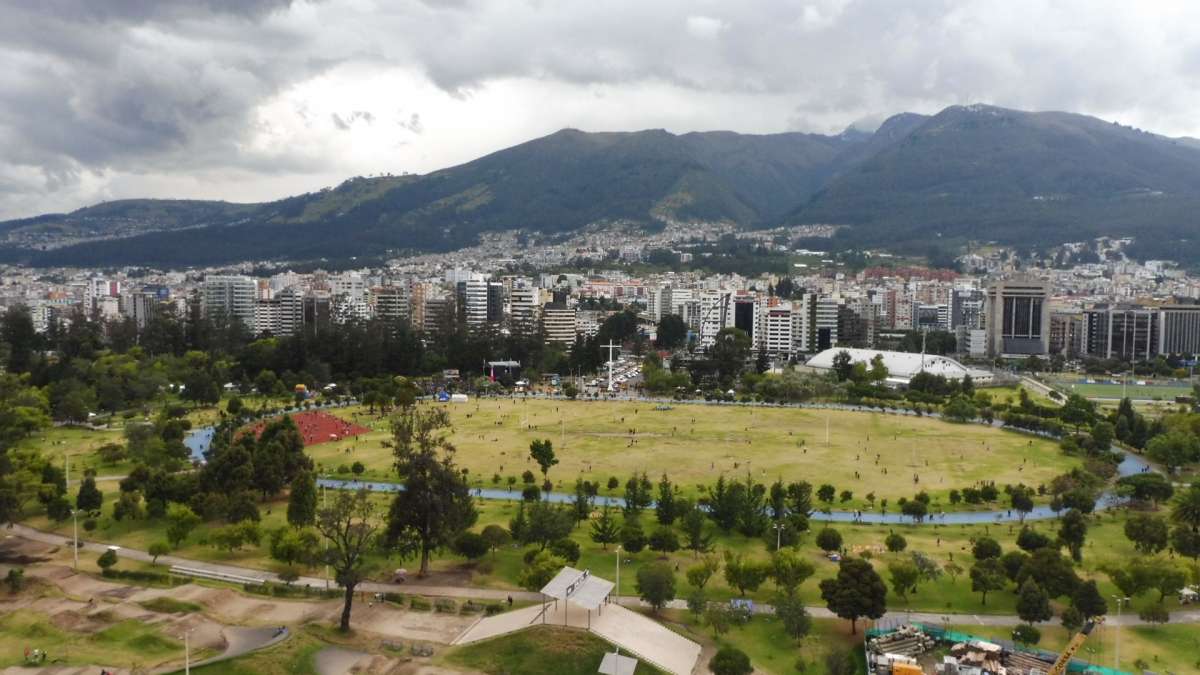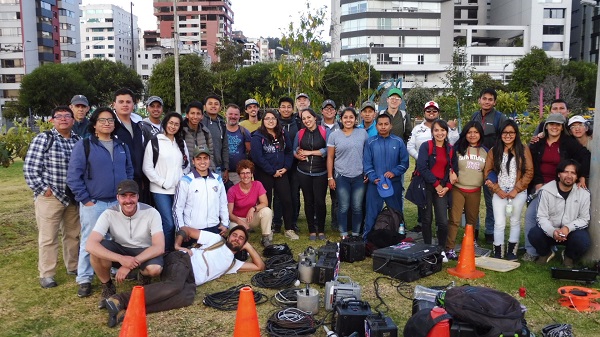
As part of this project, in 2016-2017 the Ecuadoran Geophysical Institute of the National Polytechnic School (IG-EPN) and Cerema installed a network of 20 temporary seismological stations in and around Quito’s sedimentary basin, in an effort to study the basin’s seismic reactions to a wide range of frequencies.
The ANR-REMAKE Project (2016-2020): Seismic Risk in Ecuador, mitigating, predicting, and understanding earthquakes
WP4 Seismic risk assessment in Quito.
As part of this project, in 2016-2017 the Ecuadoran Geophysical Institute of the National Polytechnic School (IG-EPN) and Cerema installed a network of 20 temporary seismological stations in and around Quito’s sedimentary basin, in an effort to study the basin’s seismic reactions to a wide range of frequencies.
Over a one-year period spanning 2017 and 2018, these stations provided a constant flow of data on seismic activity and background noise. In October 2018, work began to analyse the data as part of the thesis of Daniel Pacheco (an Ecuadorian ARTS-ID scholarship student), jointly supervised by Françoise Courboulex (CNRS-Géoazur) and Diego Mercerat (Cerema).
In early August 2018, scientists from the Ecuadoran Geophysical Institute (EPN, Quito), the ISTerre lab (Grenoble, France), the French Institute of Science and Technology for Transport, Development and Networks (IFSTARR) and Cerema began recording background noise in La Carolina park and the surrounding buildings, using more than 40 stations belonging to stakeholder institutes, supported by SISMOB stations belonging to RAP-RESIF (France).
The aim was to study changes in the seismic wavefield caused by the presence of large buildings.
The results of this research are of vital importance:
-
For seismic modelling (movement of the ground caused by earthquakes of different amplitudes)
-
For realistic damage modelling (thanks to data on the vulnerability of buildings)


